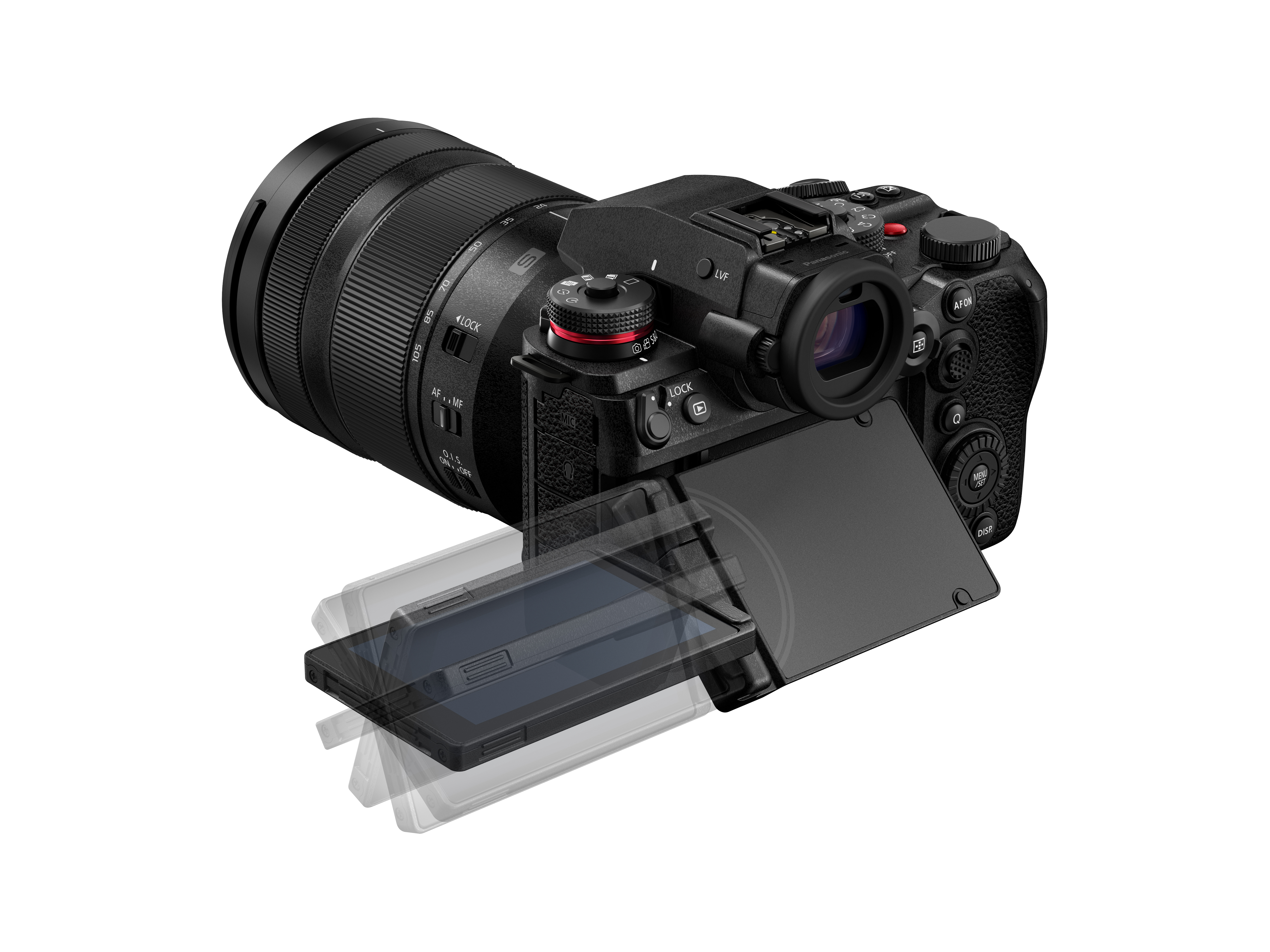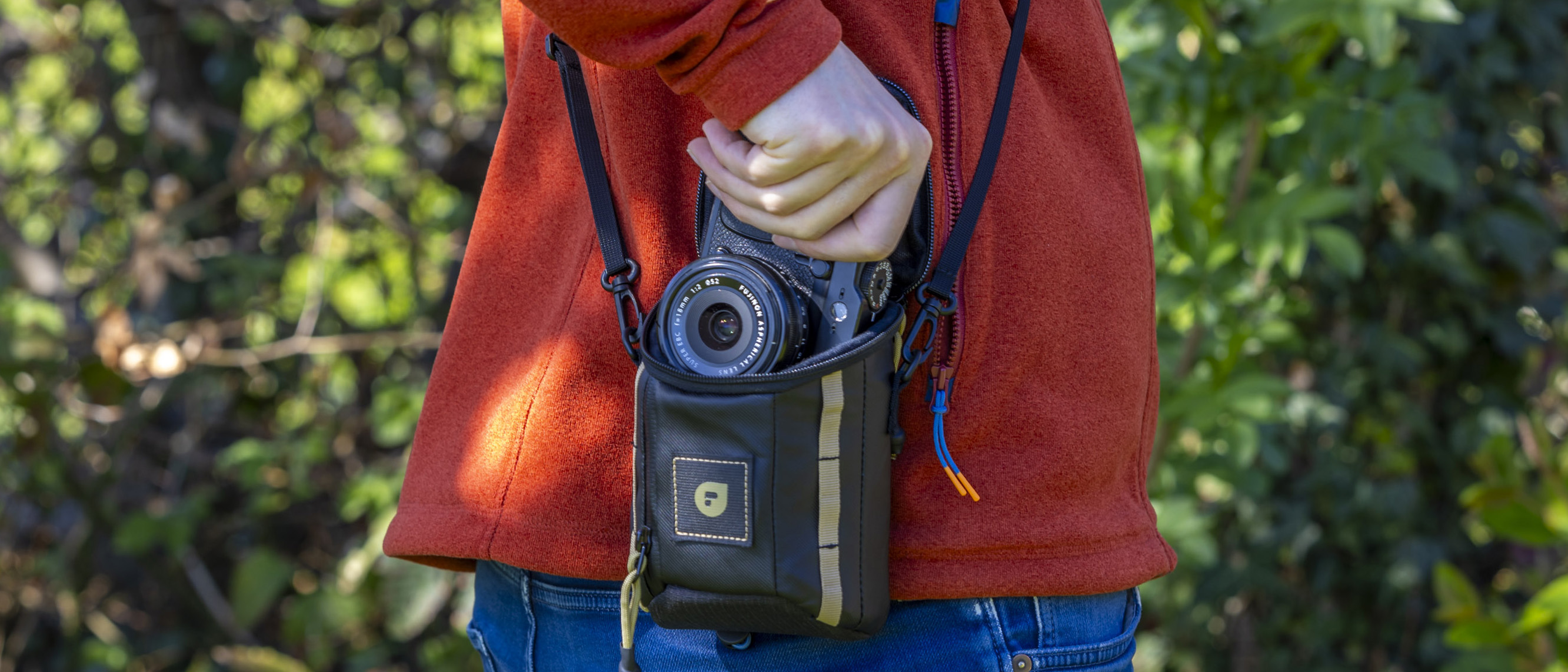New Panasonic S1R II sacrifices some pixels, but finally gains the speed and video features worthy of a flagship camera
The new Panasonic S1R II is an 8K mirrorless camera that makes huge leaps forward in high speed photography and video

The Lumix camera family has a new full-frame flagship member: The Panasonic S1R II. Unveiled on February 25, the S1R II remains a high-resolution option over the S5 series. But, unlike the predecessor, the S1R II carries a list of specifications poised to earn the flagship designation with 40fps high-speed photography and high-end video features. The first Panasonic camera with 8K at 14 stops of dynamic range, the S1R II carries a spec sheet that’s evenly divided over photo and video features enough to be considered a hybrid camera.
The Panasonic S1R II uses a newly designed 44.3MP full frame sensor as well as the brand’s latest processor, an L2 engine. Those specs actually give the second generation camera three megapixels less resolution than the earlier model, but the camera instead makes significant steps forward in both high-speed photography performance and video capabilities. Meanwhile, the update is also smaller and lighter than the original S1R, which was introduced back in 2019.
The Panasonic S1R II improves performance for still photography

Where the original could only shoot 9fps at full resolution and only 6fps with continuous autofocus, Panasonic says that the S1R II is capable of burst speeds up to 40 fps when using the electronic shutter. That’s not just at full resolution but also with continuous autofocus and a blackout-free viewfinder. Switching to the mechanical shutter drops the speed down to 9 fps when shooting higher-quality 12-bit RAW files, but a 10 fps speed is available for 10-bit RAW files as well.
A fast burst speed needs an autofocus system that can keep up and Panasonic says the autofocus has improved on the second generation camera as well. The S1R II sports a phase detection hybrid autofocus system with 779 points. Panasonic says the camera locks on about 1.6 times faster than the previous generation, while the human eye detection is twice as accurate. Tracking has moved to a dedicated focus mode for smoother operation and a less cluttered viewfinder.
The S1R II also has Panasonic’s pre-burst option, which starts taking photos with the electronic shutter up to 1.5 seconds before the shutter release is fully pressed, a feature that aids in timing genres like sports and wildlife. A few other stills features that were missing on the first generation have also made a reappearance on the S1R II, including in-camera double exposures and live composite.
Another Lumix first is that the S1R II will support tethering with Capture One, allowing a wired connection to send the images straight to the photo editor. Camera to cloud functionality through frame.io will also be supported.
The S1R II also sports several features that fans have come to expect from Panasonic. The S1R II can use LUTs for custom in-camera colors, along with a new Cinelike A2 color profile. Stabilization improves to 8.0 stops, and 7.0 stops using Dual IS lenses. High Res shot, another feature characteristic of Panasonic cameras, is available for shots up to 177MP, including handheld shots and the ability to save RAW, JPEGs and a standard 44.3MP resolution version of the same image.
Get the Digital Camera World Newsletter
The best camera deals, reviews, product advice, and unmissable photography news, direct to your inbox!
With 8K and ProRes, Panasonic is now calling the S1R II a hybrid camera

While the original camera was geared more towards still photography, Panasonic is now calling the S1R II a hybrid, adding a long list of new video capabilities to the high-end camera. The S1R II isn’t just the first Panasonic camera with 8K at 14-stops of dynamic range; that footage will be available in Open Gate with a later firmware update (Open Gate is 6.4K at launch). Open Gate uses the entire camera sensor, allowing for more flexibility to crop to different aspect ratios in post. Another Lumix first is the ability to record 5.8K Apple ProRes HQ internally to the CFExpress card rather than an external SSD.
The remainder of the S1R II’s list of video specifications now reads more like the brand’s hybrid cameras like the S5 II, including C4K 60p downsampled from the full sensor resolution, 10-bit internal recording, V-Log and Panasonic V-Gamut. 8K support for ProRes RAW is coming with a later firmware update, Panasonic says, but it will require a specific external recorder, with Atmos and Blackmagic to offer compatible accessories.
A dynamic range expansion mode will offer 14 stops of V-log video, where a 13-stop mode is designed to reduce rolling shutter. Livestream will be supported in FHD wirelessly, or in 4K 30p when plugged into a smartphone’s USB port.
Like Panasonic's other hybrid cameras, the S1R II doesn't put a strict limit on the video recording times. A new battery grip allows for hot swaps and simultaneous power supply when recording to an external SSD. A DC coupler – also sold separately – allows the camera to be powered through USB-C.
The S1R II is actually smaller and lighter than the first generation


Despite the lengthening of the camera’s spec sheet, the Panasonic S1R II is both smaller and lighter than the predecessor. Panasonic says the high-end model is now “within millimeters" of the dimensions on the S5 IIX. The camera weighs in at 796g compared to the first generation’s 1016g.
The S1R II adapts a new LCD screen similar to the GH7 that can tilt up and down from the back of the camera but also still rotates out to the side, making it a hybrid tilt and vari-angle design. The camera ergonomics have also been updated to include a new video, photo and slow and quick or S&Q mode switch. A new red record button on the front of the camera is designed for easier access when using cage accessories. (For stills photographers, the button can also be programmed like a custom button.)
The camera retains the expected weather-sealed design and magnesium alloy frame of a high-end model. But, new to the series is the ability to close the shutter over the sensor when the camera powers off, a feature that helps prevent dust from building up on the sensor when swapping lenses. The feature requires a remake of the shutter, moving to carbon-reinforced blades and metal gearing that also brings a higher 400,000 shot shutter count durability rating.
The battery life, however, hasn’t moved much from the original, rated at 340 shots using the rear screen, 240 shots with the viewfinder, or 950 shots in power save mode.
The Panasonic S1R II body carries a retail list price of $3,299 / £2,999 / AU$5,499 for the body only, with expected availability in March 2025.
You may also like
Browse the best L-Mount lenses or the best full frame cameras, or check out what other announcements we expect from CP+ 2025.

With more than a decade of experience reviewing and writing about cameras and technology, Hillary K. Grigonis leads the US coverage for Digital Camera World. Her work has appeared in Business Insider, Digital Trends, Pocket-lint, Rangefinder, The Phoblographer and more.
You must confirm your public display name before commenting
Please logout and then login again, you will then be prompted to enter your display name.
